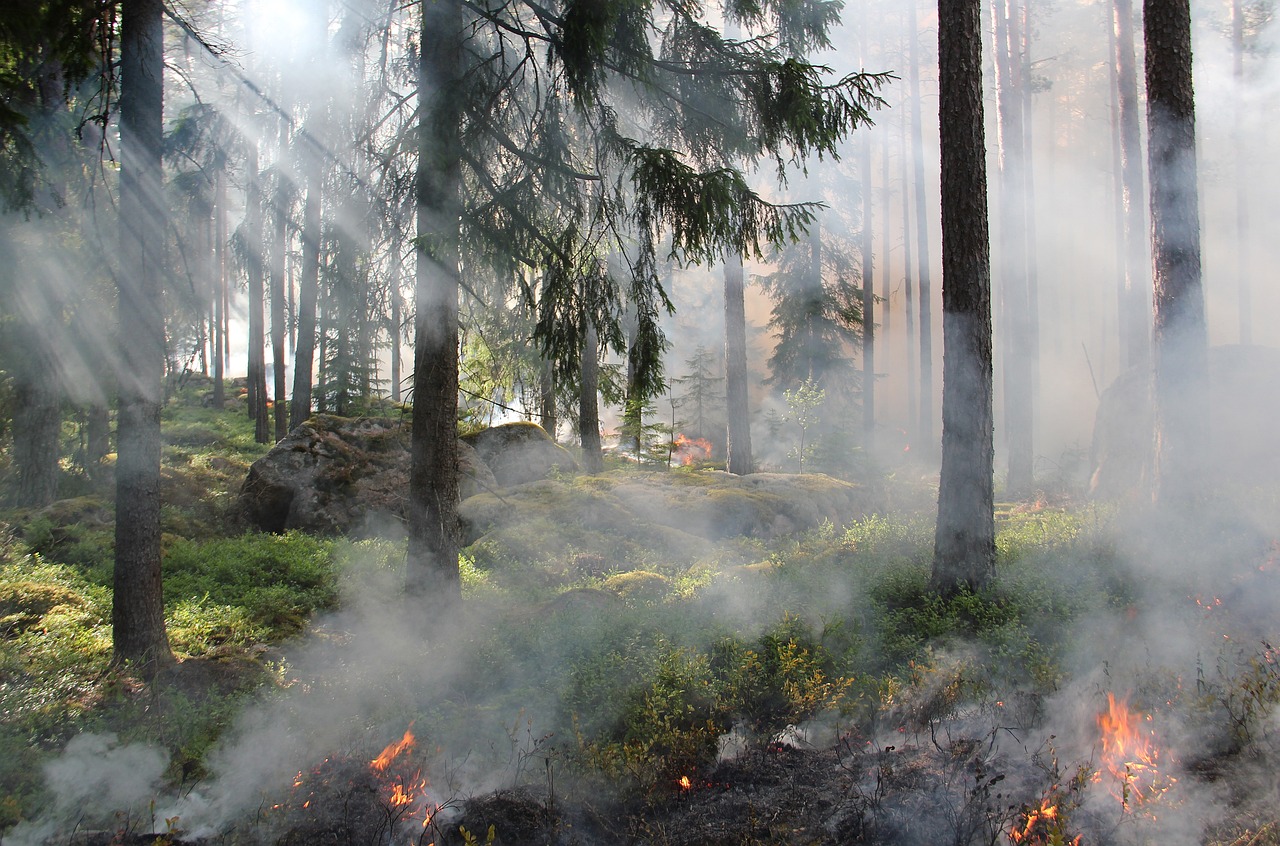Table of Contents
In the tranquil world of floral gardens, a silent but essential partnership unfolds—a dance between flowers and pollinators that sustains life on Earth. While gardens have long been admired for their beauty, they also have the power to support biodiversity and contribute to the conservation of vital pollinators like bees, butterflies and hummingbirds. In this article, we will explore the harmonious relationship between floral gardens and pollinator conservation, highlighting the crucial role these gardens play in nurturing and preserving wildlife.
In the tranquil world of floral gardens, a silent but essential partnership unfolds—a dance between flowers and pollinators that sustains life on Earth. While gardens have long been admired for their beauty, they also have the power to support biodiversity and contribute to the conservation of vital pollinators like bees, butterflies and hummingbirds. In this article, we will explore the harmonious relationship between floral gardens and pollinator conservation, highlighting the crucial role these gardens play in nurturing and preserving wildlife.
The Ecosystem Within a Garden: Within the confines of a well-tended garden, a microcosm of life thrives. Flowers, with their vibrant colors and enticing fragrances, beckon pollinators to partake in the nectar and pollen they offer. In return for this nourishment, these tiny visitors inadvertently carry pollen from one bloom to another, facilitating the reproduction of the plants. This mutualistic relationship ensures the garden’s continual bloom, providing sustenance for a wide variety of species.
A Haven for Pollinators: Gardens, whether large or small, serve as havens for pollinators in an increasingly urbanized world. As natural habitats shrink due to human development, gardens become essential refuges where pollinators can find the food and shelter they need to survive. By cultivating diverse arrays of nectar-rich flowers and providing suitable nesting sites, gardeners can attract and support a wide range of pollinating insects and birds.
Biodiversity in Your Backyard: One of the remarkable aspects of pollinator-friendly gardens is the incredible biodiversity they can foster. These spaces become not only vibrant with color but also alive with the buzzing of bees, the fluttering of butterflies and the occasional hum of a passing hummingbird. Beyond the pollinators, the entire ecosystem benefits. Predators and other beneficial insects are drawn to these oases, creating a natural balance that reduces the need for pesticides.
Conservation through Cultivation: The significance of floral gardens extends beyond the aesthetics. They are tangible contributions to the broader efforts of pollinator conservation. Every garden, whether a small urban balcony or a sprawling rural landscape, adds to the collective effort of preserving these vital creatures. The more gardens that embrace pollinator-friendly practices, the more resilient our ecosystems become.
Educating and Inspiring: Gardens also serve as educational tools, inspiring a deeper appreciation for the natural world. By observing the interactions between flowers and pollinators up close, individuals, especially children, gain a profound understanding of the interdependence of all living things. This firsthand experience can kindle a lifelong passion for environmental stewardship.
In conclusion, the role of floral gardens in pollinator conservation is both profound and multifaceted. These meticulously curated spaces are more than just beautiful; they are sanctuaries for biodiversity and crucial players in preserving Earth’s delicate balance. As we tend to our gardens, we are also tending to the future of our planet, ensuring that the dance between flowers and pollinators continues to flourish for generations to come.
For additional details, consider exploring the related content available here Make Your Garden a Haven for Insect Diversity – Brooklyn Botanic …
The Importance of Pollinators
Pollinators are the unsung heroes of our ecosystems. They facilitate the reproduction of countless plant species by transferring pollen from one flower to another, enabling the production of fruits, vegetables and nuts. This process not only sustains plant populations but also provides food for a myriad of animals, including humans. However, the well-being of pollinators is under threat due to habitat loss, pesticide use and climate change.
Pollinators, often working tirelessly and unnoticed, truly deserve the title of unsung heroes within our delicate ecosystems. Their remarkable role in facilitating the reproduction of a myriad of plant species is indispensable, serving as the critical link that enables the production of the fruits, vegetables and nuts that grace our tables. Beyond sustaining plant populations, this intricate dance of pollination cascades through the food web, ultimately providing sustenance for countless animal species, including humans.
Consider the humble bee, an emblematic pollinator. As it flits from flower to flower, collecting nectar and pollen, it inadvertently transfers the life-giving pollen from the anthers of one bloom to the stigma of another. This simple act, repeated by a vast array of pollinators, sparks the creation of seeds and fruits, driving the very heart of plant reproduction. The apple in your orchard, the tomato in your garden and the almonds in your snack—each owes its existence to these diligent workers.
Moreover, the interconnectedness of ecosystems means that the well-being of pollinators reverberates throughout the natural world. The fruit-bearing plants that depend on pollinators provide sustenance for herbivorous animals, forming the base of many food chains. Predators and scavengers, in turn, rely on these herbivores for their own nourishment. Thus, the fate of pollinators directly impacts the balance of entire ecosystems.
Yet, amidst their invaluable service, pollinators face an alarming array of threats. Habitat loss, driven by urbanization and agricultural expansion, leaves them with fewer foraging and nesting sites. The widespread use of pesticides, while protecting crops, can inadvertently harm or even kill these essential creatures. Climate change disrupts the timing and availability of flowering plants, further challenging the synchronization of pollinators and their food sources.
As stewards of the Earth, it falls upon us to recognize the vital role that pollinators play and to take action to protect them. Conservation efforts, such as creating pollinator-friendly habitats and reducing pesticide use, are essential steps in ensuring their survival. Our commitment to safeguarding these unsung heroes is not just an act of environmental responsibility; it’s a pledge to safeguard the intricate web of life that sustains us all. By nurturing our pollinators, we secure a future where the bounty of nature continues to flourish for generations to come.
Looking for more insights? You’ll find them right here in our extended coverage: How to build a pollinator garden | U.S. Fish & Wildlife Service

Floral Gardens as Sanctuaries
Floral gardens, whether large or small, urban or rural, have the potential to serve as sanctuaries for pollinators. By carefully selecting and cultivating plants that provide nectar, pollen and shelter, gardeners can create havens that support local pollinator populations. Here’s how:
Floral gardens, whether they occupy vast landscapes or cozy urban corners, possess a remarkable potential to function as sanctuaries for essential pollinators. In a world where pollinator populations face numerous challenges, from habitat loss to pesticide exposure, cultivating gardens that prioritize their well-being has never been more critical. Here’s a closer look at how gardeners can take intentional steps to create these havens and foster local pollinator populations:
Choose Native Plants: Selecting native plants is a fundamental step in establishing a pollinator-friendly garden. Native plants have evolved alongside local pollinators and often provide the best sources of nectar and pollen. They are adapted to local conditions, making them more resilient and easier to maintain. Research which native species are suitable for your region and aim to include a diverse range to support different pollinators.
Plant for Continuous Bloom: To sustain pollinators throughout the growing season, aim for a garden that features plants with staggered blooming periods. This ensures a consistent supply of nectar and pollen from early spring to late fall, supporting a variety of pollinators with different life cycles.
Diversity is Key: A variety of flower shapes, sizes and colors will attract a broader range of pollinators. Some species are specialized and only pollinate specific types of flowers, so diversity is essential to accommodate them all. Consider including flowers that are both open and tubular, as this appeals to different pollinator species.
Provide Host Plants: Many pollinators, such as butterflies and moths, require specific host plants for their larvae. For example, monarch butterflies rely on milkweed as a host plant. Include these host plants in your garden to support the complete life cycle of these pollinators.
Avoid Chemical Pesticides: Pesticides, even those marketed as “bee-friendly,” can harm pollinators. Minimize or eliminate the use of chemical pesticides in your garden. Instead, explore natural and non-toxic methods of pest control to maintain a healthy garden ecosystem.
Offer Water Sources: Pollinators need access to water, not just for drinking but also for maintaining humidity and temperature control. Providing shallow dishes with water and some rocks or floating plants for landing can be a valuable addition to your garden.
Create Nesting Sites: Different pollinators have varying nesting requirements. Some, like solitary bees, nest in tunnels in the ground or hollow stems, while others, like bumblebees, require cavities. Leave some areas of your garden undisturbed to create potential nesting sites and consider adding features like bee hotels or butterfly houses.
Practice Sustainable Gardening: Implement sustainable gardening practices, such as mulching with organic materials, composting and using rain barrels to conserve water. A healthy garden ecosystem is more resilient and supportive of pollinators.
Educate and Advocate: Share your knowledge and passion for pollinator-friendly gardening with friends, neighbors and your community. Advocate for pollinator protection and conservation efforts at the local and national levels.
Monitor and Celebrate: Regularly observe your garden and the pollinators it attracts. Document the species you encounter and celebrate the role your garden plays in supporting biodiversity. By sharing your experiences and successes, you can inspire others to join the effort to protect pollinators.
In conclusion, cultivating a pollinator-friendly garden is an act of stewardship that not only enhances the beauty of your outdoor space but also contributes to the conservation of essential pollinators. By following these steps and nurturing a haven for pollinators, you are actively participating in the vital work of ensuring the health and sustainability of ecosystems worldwide. Your garden can become a sanctuary not only for you but also for the diverse array of pollinators that depend on the resources you provide.
To expand your knowledge on this subject, make sure to read on at this location: Habitat at Home | Washington Department of Fish & Wildlife
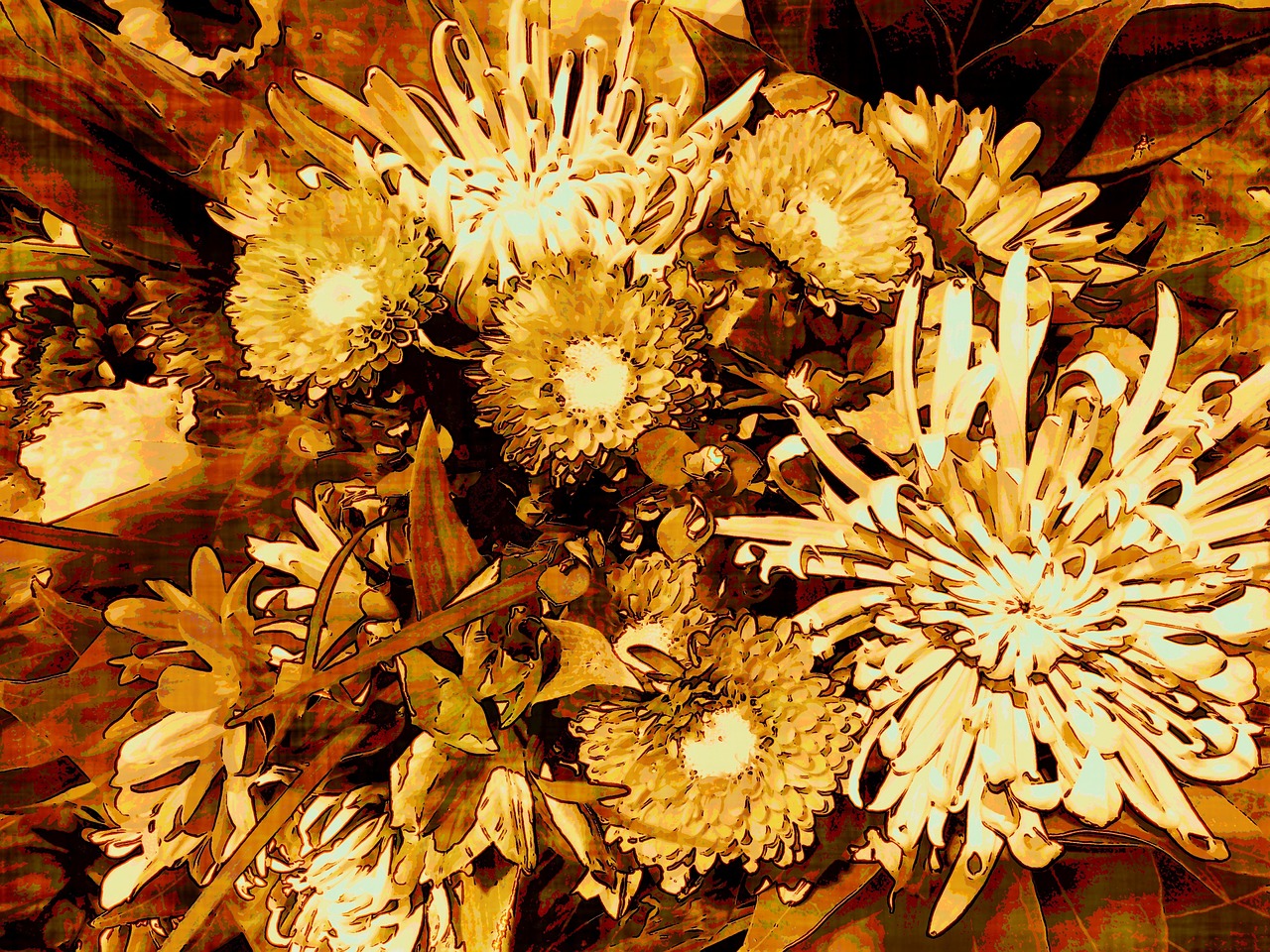
Plant Native Species
Native plants are well-adapted to local conditions and provide essential food sources for native pollinators. By incorporating a variety of native flowers in your garden, you can attract and nourish a diverse range of pollinators.
Native plants are the unsung heroes of our ecosystems, intricately linked to the well-being of local wildlife. These plants have evolved over millennia to thrive in specific regions, making them perfectly suited to local conditions. Their resilience and adaptability not only benefit the environment but also play a crucial role in supporting native pollinators.
Incorporating a diverse array of native flowers into your garden is akin to rolling out a vibrant, all-you-can-eat buffet for local pollinators. Bees, butterflies, hummingbirds and other essential pollinators rely on these native blooms as their primary source of sustenance. By cultivating a garden rich in native flora, you create a haven where these vital insects and animals can find nectar, pollen and habitat.
Furthermore, the symbiotic relationship between native plants and pollinators is a testament to the intricate web of life. As pollinators visit these flowers in search of nourishment, they inadvertently facilitate the reproduction of the plants, ensuring the next generation’s survival. This dynamic dance of life not only sustains the local ecosystem but also fosters biodiversity.
Beyond the environmental benefits, the presence of native pollinators in your garden can be a source of wonder and inspiration. Observing the graceful flutter of butterflies or the buzz of industrious bees as they move from flower to flower is a reminder of the interconnectedness of all living things.
In essence, choosing to populate your garden with native plants is a conscious and impactful decision to support local ecosystems, preserve biodiversity and nurture the beauty of nature. It’s an invitation for native pollinators to flourish alongside you, a harmonious partnership that celebrates the wonders of the natural world.
For a comprehensive look at this subject, we invite you to read more on this dedicated page: Plant native plants to help nature | | Wisconsin DNR

Choose a Variety of Blooms
Different pollinators have different preferences. Some are attracted to the bright colors of flowers like zinnias and sunflowers, while others prefer the subtler hues of native wildflowers. Including a variety of bloom types and colors ensures a broad appeal to pollinators.
Different pollinators have different preferences, making the diversity of your garden’s blooms crucial to attracting a wide range of these essential creatures. Some, like butterflies and bees, are drawn to the vibrant and bold colors of flowers like zinnias and sunflowers, acting as if they were nature’s own landing strips. Their visual acuity leads them straight to these radiant beacons.
On the other hand, native wildflowers, with their subtler hues and intricate designs, are favored by an array of pollinators, including solitary bees and specialized butterflies. These delicate blossoms provide a quiet oasis of nectar and pollen, hidden treasures for those with a discerning eye.
By planting a mix of bloom types and colors, you’re essentially rolling out a pollinator buffet. From the flamboyant to the understated, your garden becomes a thriving ecosystem, where all pollinators find a place to dine. This diversity not only ensures your garden’s continued vibrancy but also plays a vital role in supporting local ecosystems and maintaining biodiversity. So, in your garden, let diversity bloom to inspire the endless dance of pollinators throughout the seasons.
To delve further into this matter, we encourage you to check out the additional resources provided here: Plant for Pollinators – Cincinnati Zoo & Botanical Garden®

Plan for Continuous Blooming
Aim for a garden that blooms throughout the growing season. This provides a consistent food source for pollinators, especially during critical times like early spring and late fall when food can be scarce.
Creating a garden that blooms continuously throughout the growing season is not only a feast for the eyes but also a lifeline for the vital pollinators that help sustain our ecosystems. This commitment to a year-round flowering garden goes beyond aesthetics; it’s an act of ecological stewardship.
As you design your garden to be a haven for pollinators, consider the strategic placement of diverse plant species that bloom at different times. Early spring and late fall are crucial periods for pollinators when nectar and pollen sources can be limited. By including early bloomers like crocuses and snowdrops, you offer nourishment to pollinators emerging from winter hibernation. Likewise, late bloomers such as asters and sedums provide sustenance to these essential insects as they prepare for the colder months ahead.
A year-round blooming garden not only supports the survival of bees, butterflies and other pollinators but also enhances the overall health of your garden ecosystem. These insects play a pivotal role in the pollination of fruit and vegetable crops, ensuring bountiful harvests and robust plant reproduction.
Furthermore, the presence of pollinators can inspire creativity and wonder in your garden. Observing the delicate dance of butterflies and the diligent work of bees can be a source of inspiration, prompting you to explore the intricate relationships between plants and pollinators more deeply. It may also encourage you to experiment with new plant varieties and garden designs, further enhancing your gardening experience.
In conclusion, the pursuit of a garden that blooms throughout the growing season is a harmonious blend of aesthetics, ecological responsibility and personal enrichment. By prioritizing the needs of pollinators during critical times, you not only contribute to the health of local ecosystems but also cultivate a deeper connection with nature and the creative potential of your garden.
Don’t stop here; you can continue your exploration by following this link for more details: How to build a pollinator garden | U.S. Fish & Wildlife Service
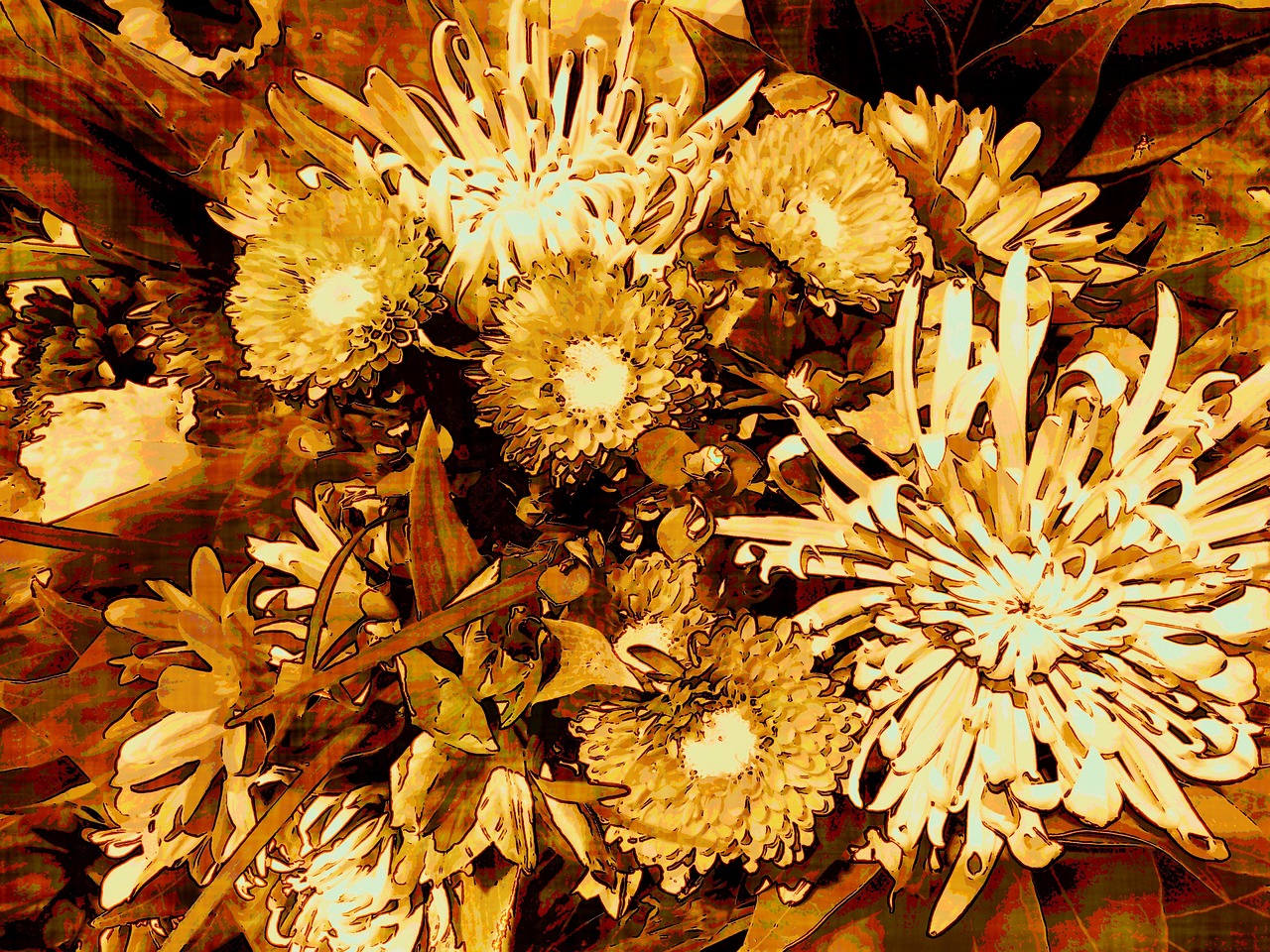
Avoid Pesticides
Pesticides can harm pollinators and disrupt the delicate balance of your garden’s ecosystem. Instead, employ natural pest control methods and cultivate plants that naturally repel pests.
Pesticides can harm pollinators and disrupt the delicate balance of your garden’s ecosystem, which is essential for its health and productivity. Instead of resorting to chemical solutions, consider adopting natural pest control methods and harnessing the power of companion planting to create a thriving, harmonious garden environment.
Beneficial Insects: Encourage the presence of beneficial insects like ladybugs, lacewings and parasitic wasps in your garden. These natural predators feed on common garden pests, helping to keep their populations in check. You can attract these beneficial insects by planting nectar-rich flowers and providing suitable habitats, such as insect houses or logs.
Companion Planting: Companion planting is a time-tested method that involves strategically planting certain species together to deter pests or enhance growth. For example, marigolds are known to repel aphids and nematodes when planted alongside vegetables, while basil can help protect tomatoes from whiteflies.
Natural Predators: Consider introducing natural predators of garden pests. For instance, if you have an issue with slugs or snails, introducing ducks or certain types of beetles to your garden can help keep their populations in check. These natural solutions can be highly effective in managing specific pest problems.
Organic Pest Sprays: Create your own organic pest sprays using ingredients like neem oil, garlic or hot pepper. These concoctions can be effective at repelling or eliminating common garden pests without harming beneficial insects or the environment.
Crop Rotation: Implement a crop rotation plan in your garden to disrupt the life cycles of pests and pathogens. By moving crops to different areas each season, you can reduce the buildup of specific pests and diseases in the soil.
Healthy Soil: Healthy soil is a cornerstone of a resilient garden ecosystem. Enrich your soil with compost and organic matter to promote strong, healthy plants that are less susceptible to pests and diseases. Robust plants are better equipped to fend off invaders.
Plant Diversity: Diversity in your garden can help deter pests naturally. Monoculture, where only one type of plant is grown, can attract specific pests that target that plant. By planting a variety of species, you make it more challenging for pests to establish a stronghold.
Handpick and Prune: Regularly inspect your plants for signs of pest damage and manually remove any pests you encounter. Pruning and thinning can also help improve air circulation and reduce hiding places for pests.
Encourage Predatory Birds: Attract birds to your garden by providing bird feeders, birdbaths and birdhouses. Many bird species, like sparrows and finches, feed on garden pests such as caterpillars and aphids.
Incorporating these natural pest control methods into your gardening practices not only helps protect the delicate balance of your garden’s ecosystem but also contributes to a healthier and more sustainable garden. By working in harmony with nature, you can enjoy a thriving garden that flourishes without the need for harmful chemicals.
If you’d like to dive deeper into this subject, there’s more to discover on this page: Pollinator Conservation Program | Xerces Society

Provide Habitat
Pollinators need more than just food. They also require shelter and nesting sites. Incorporate features like brush piles, logs and rock walls to create habitats for pollinators.
Creating a haven for pollinators goes beyond providing a buffet of nectar-rich blooms. To truly support these invaluable creatures, it’s essential to address their need for shelter and nesting sites. Here are some creative and effective ways to enhance your garden’s habitat for pollinators:
Bee Hotels: Construct or purchase bee hotels, which are specifically designed structures that mimic the natural nesting sites of solitary bees. These bees, such as mason bees and leafcutter bees, don’t live in hives but rather nest in small cavities. Bee hotels offer them a safe place to lay their eggs and store pollen.
Butterfly Houses: Butterfly houses, also known as butterfly hibernation boxes or roosting pockets, provide shelter for butterflies during adverse weather conditions or overnight. These small wooden structures feature narrow slots where butterflies can tuck themselves away from wind and rain.
Rock Gardens: Incorporate rock gardens or stone features into your landscape. Rocks provide warm, sunlit surfaces for butterflies and other insects to bask in. They also create crevices where insects can find shelter from predators and harsh weather.
Brush Piles: Create brush piles using branches, twigs and leaves. These untidy heaps mimic the natural habitats of many insects and provide refuge for ground-nesting bees, beetles and spiders. Brush piles also attract small mammals that can help control garden pests.
Logs and Deadwood: Leave logs and sections of deadwood in your garden. They serve as ideal hideaways for beetles, ants and various insect larvae. Decaying wood not only provides shelter but also becomes a valuable food source for wood-boring insects.
Native Grasses and Weeds: Allow native grasses and wildflowers to flourish in your garden. Many pollinators, especially butterflies and moths, rely on native grasses and “weeds” as host plants for their larvae. Examples include milkweed for monarch butterflies and dill for swallowtail butterflies.
Mud Puddles: Create a small mud puddle or damp area in your garden. Butterflies, especially males, visit these spots to sip moisture and extract essential minerals. You can enhance this feature by placing a shallow dish filled with moist sand or mud in your garden.
Water Sources: Provide a clean and shallow water source, such as a birdbath with rocks for perching. Bees and butterflies often need a drink and having a reliable water source nearby can be a lifesaver during hot, dry spells.
Tangled Vegetation: Allow certain areas of your garden to become a bit wild and tangled. These thickets of vegetation offer excellent hiding spots for various insects, including beetles and spiders and may attract beneficial predators that keep garden pests in check.
By incorporating these features into your garden, you’ll create a multifaceted habitat that not only provides a feast of nectar and pollen but also offers pollinators the essential shelter and nesting sites they need to thrive. Your garden will become a sanctuary, attracting a diverse array of pollinators and other wildlife, while also contributing to the broader effort of pollinator conservation.
Looking for more insights? You’ll find them right here in our extended coverage: The Importance of Pollinators | USDA
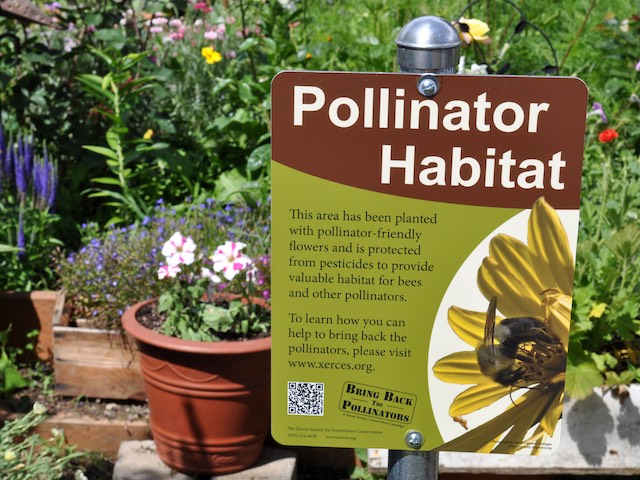
Increased Crop Yields
For those with vegetable or fruit gardens, nearby pollinator gardens can significantly increase crop yields through improved pollination.
The synergy between vegetable or fruit gardens and nearby pollinator gardens is a natural wonder that can greatly benefit agricultural enthusiasts and the environment alike. Beyond just coexistence, these two types of gardens can form a harmonious partnership, with far-reaching implications for both.
In the world of vegetable and fruit cultivation, the presence of pollinators is nothing short of essential. These industrious insects, including bees, butterflies and hummingbirds, play a pivotal role in the pollination process. When they visit the blossoms of vegetables and fruit trees, they transfer pollen from one flower to another, kickstarting the production of fruits and vegetables. This crucial step directly influences crop yields and quality.
By establishing nearby pollinator gardens, filled with nectar-rich flowers and plants, you not only provide these vital insects with a nourishing habitat but also ensure a steady supply of pollinators for your vegetable and fruit crops. This mutually beneficial arrangement results in improved pollination rates, which, in turn, lead to increased crop yields. Larger, more bountiful harvests become the norm, ensuring a steady supply of fresh, homegrown produce.
However, the advantages of this partnership extend beyond your own garden’s boundaries. Pollinator gardens support local ecosystems by providing food and shelter to these beneficial insects. This, in turn, contributes to the overall health of your region’s biodiversity.
Furthermore, pollinator gardens can serve as a source of inspiration and beauty. Their vibrant colors and diverse flora attract not only pollinators but also human admirers. These gardens become peaceful sanctuaries and educational spaces, fostering a deeper connection between people and the natural world.
In conclusion, the relationship between vegetable or fruit gardens and nearby pollinator gardens is a win-win situation. It enhances crop yields, promotes biodiversity and creates beautiful, inspiring spaces for all to enjoy. By nurturing this harmonious coexistence, you can reap the rewards of nature’s intricate web of life while contributing to the well-being of the environment.
Additionally, you can find further information on this topic by visiting this page: The Importance of Pollinators | USDA
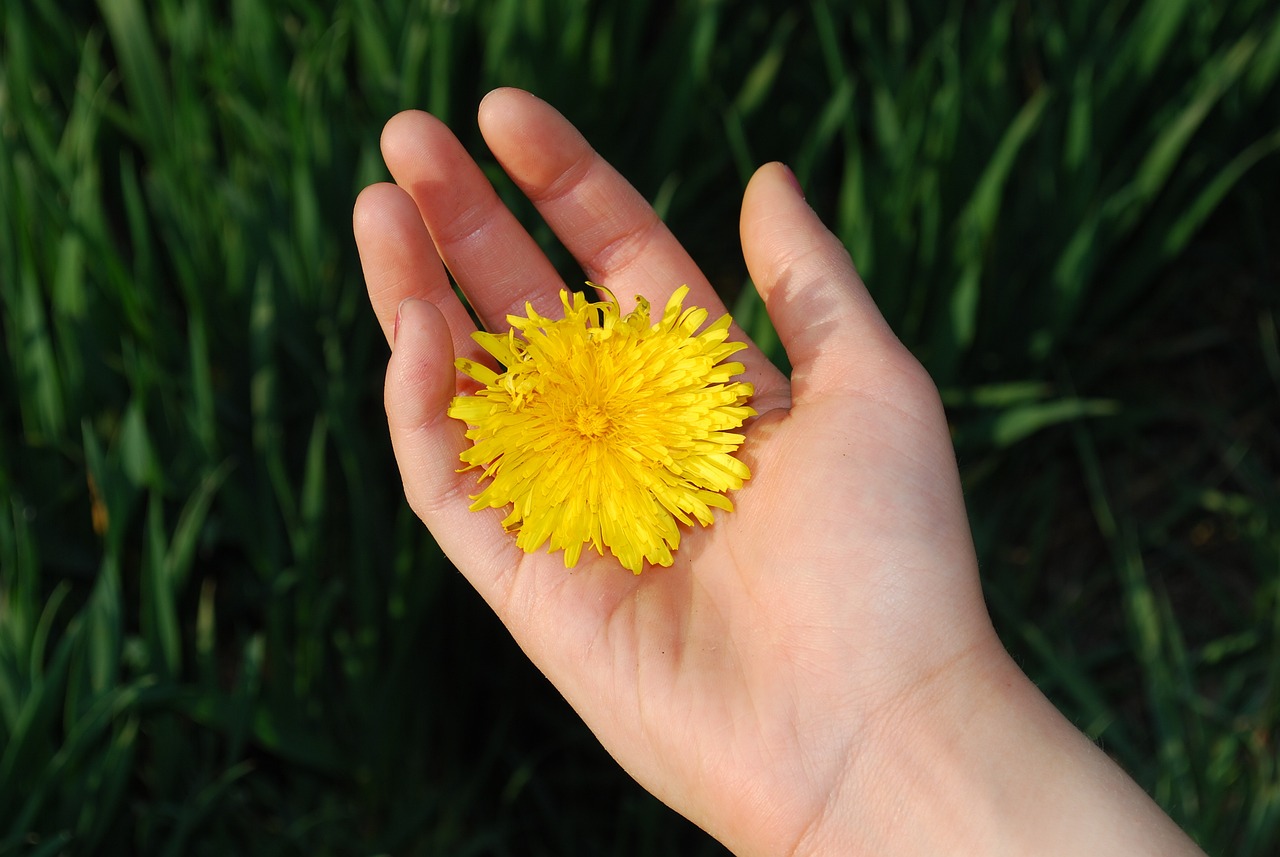
Enhanced Biodiversity
Pollinator gardens attract a wide range of wildlife, from butterflies and bees to beneficial insects and birds. This increased biodiversity contributes to the overall health and resilience of the ecosystem.
Pollinator gardens attract a wide range of wildlife, from butterflies and bees to beneficial insects and birds. This increased biodiversity contributes to the overall health and resilience of the ecosystem in several important ways:
Pollination Services: One of the most critical benefits of pollinator gardens is their role in supporting pollinators like bees and butterflies. These creatures play a pivotal role in fertilizing flowers, enabling the reproduction of countless plant species, including many of the crops humans rely on for food. By providing a habitat rich in nectar and pollen sources, pollinator gardens help sustain these vital pollination services, safeguarding our agricultural and natural landscapes.
Natural Pest Control: Attracting beneficial insects such as ladybugs, lacewings and predatory wasps to your pollinator garden can help control pest populations in your local ecosystem. These insects are natural predators of common garden pests, reducing the need for chemical pesticides and promoting a healthier, more balanced garden environment.
Bird Habitats: Pollinator gardens not only benefit insects but also attract a variety of bird species. Birds are essential components of ecosystems as they help control insect populations, disperse seeds and contribute to nutrient cycling. By providing a haven for these feathered friends, pollinator gardens can enhance the biodiversity and vitality of local ecosystems.
Biodiversity Conservation: Many pollinator plants native to a region serve as host plants for specific butterfly and moth species. By cultivating these native plants in pollinator gardens, you can support the entire life cycles of these insects. This, in turn, aids in the conservation of native pollinators and helps maintain the biodiversity of local ecosystems.
Improved Soil Health: Pollinator gardens often include a variety of plant species with different root structures, which can improve soil health. These plants help prevent soil erosion, enhance nutrient cycling and foster a healthier underground ecosystem by promoting beneficial soil microorganisms.
Education and Awareness: Beyond their ecological benefits, pollinator gardens serve as valuable educational tools. They offer opportunities for individuals and communities to learn about the vital roles of pollinators, the interconnectedness of species and the importance of conserving native plants. This knowledge can lead to increased environmental awareness and action to protect biodiversity.
Aesthetic and Recreational Value: In addition to their ecological importance, pollinator gardens enhance the aesthetic appeal of outdoor spaces. They provide colorful blooms, enticing scents and a tranquil atmosphere that can be enjoyed by people of all ages. These gardens become places of relaxation, reflection and inspiration, encouraging more people to connect with nature.
In summary, pollinator gardens are not just about creating beautiful landscapes; they are dynamic ecosystems that foster biodiversity and ecological resilience. They demonstrate the power of nature to heal and rejuvenate itself when given the right conditions. By cultivating these gardens, individuals and communities can actively participate in conserving the environment and supporting the creatures that make our world flourish.
Don’t stop here; you can continue your exploration by following this link for more details: Make Your Garden a Haven for Insect Diversity – Brooklyn Botanic …
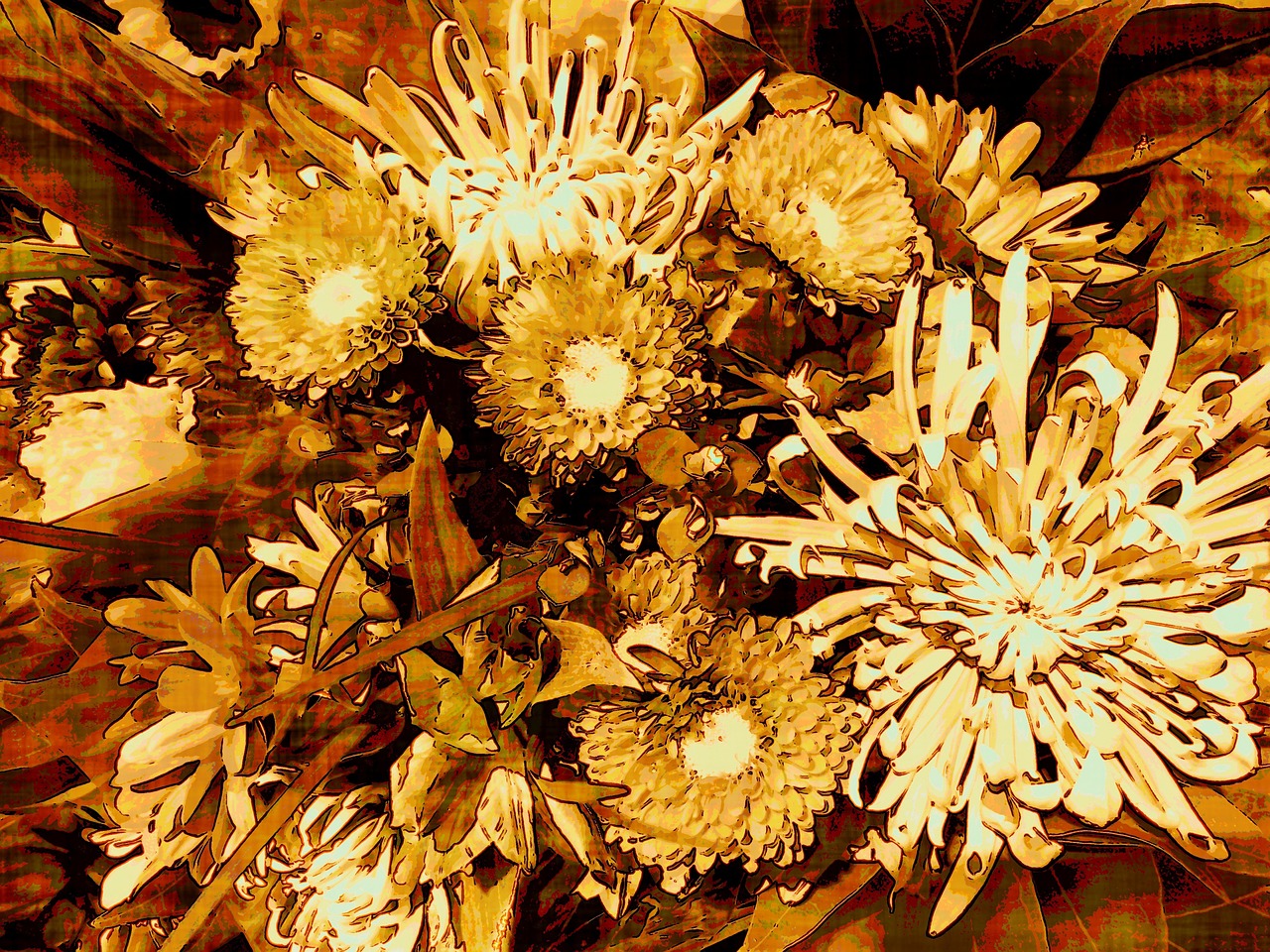
Educational Opportunities
Pollinator gardens offer valuable educational opportunities. They can serve as outdoor classrooms for learning about the life cycles of insects, the importance of pollination and the interconnectedness of species.
Pollinator Gardens: Nature’s Living Classrooms
The beauty of pollinator gardens extends far beyond their vibrant blooms and bustling insect activity. These carefully cultivated patches of nature offer a wealth of educational opportunities, transforming into dynamic outdoor classrooms that impart essential lessons about the natural world:
Life Cycles Unveiled: In the heart of a pollinator garden, students and nature enthusiasts can witness the intricate life cycles of insects up close. From egg to larva to pupa to adult, observing these stages in real-time fosters a profound understanding of metamorphosis and the marvels of nature’s design.
Pollination Dynamics: The buzz of bees, the flutter of butterflies and the industrious work of other pollinators provide a living lesson in the crucial role of pollination. Visitors can observe how different flower shapes, sizes and colors attract specific pollinators, showcasing the intricacies of coevolution between plants and insects.
Biodiversity Showcases: Pollinator gardens are biodiversity hotspots, teeming with a diverse array of plant species and the insects they attract. This richness provides an opportunity to explore concepts of biodiversity, species interactions and the importance of preserving ecosystems.
Interconnectedness Illustrated: These gardens vividly demonstrate the interconnectedness of species. Students can learn how a change in one element of the ecosystem, such as the loss of a pollinator species, can have cascading effects on plants, animals and even human food supplies.
Conservation Awareness: Pollinator gardens offer a platform to discuss conservation issues. Visitors can learn about the threats facing pollinators, such as habitat loss and pesticide use and discover practical ways to support conservation efforts, from planting native species to creating pollinator-friendly habitats.
Cultural and Historical Context: Many pollinator plants have cultural and historical significance. Gardens can showcase the importance of these plants in human history, from medicinal uses to cultural traditions, bridging the gap between science and culture.
Hands-On Learning: For educators, pollinator gardens provide a hands-on learning environment. Students can engage in activities like plant identification, insect observation and even citizen science projects, contributing valuable data to scientific research.
Inspiring Stewardship: Immersed in the beauty and wonder of pollinator gardens, visitors are inspired to become stewards of the environment. These outdoor classrooms foster a sense of responsibility and a desire to protect pollinators and their habitats.
Cross-Disciplinary Exploration: Pollinator gardens offer opportunities for cross-disciplinary learning. Students can explore botany, entomology, ecology, art and even writing as they document their observations and experiences in these living classrooms.
In essence, pollinator gardens are not just patches of blooming flowers; they are dynamic educational spaces that ignite curiosity, deepen ecological awareness and inspire a sense of wonder about the natural world. As outdoor classrooms, they encourage a lifelong connection to nature and a commitment to the conservation of vital pollinator species, ensuring a greener, healthier planet for generations to come.
For additional details, consider exploring the related content available here Certify

Community Engagement
Pollinator gardens can bring communities together. Neighbors and local organizations can collaborate on garden projects, fostering a sense of environmental stewardship and shared responsibility for conservation.
Expanding on the idea of pollinator gardens bringing communities together:
Promoting Community Bonding through Pollinator Gardens:
Pollinator gardens offer more than just a habitat for essential insects like bees and butterflies; they serve as vibrant focal points for community engagement and collaboration. Here are several ways in which these gardens can bring people together:
Shared Responsibility for Conservation: Establishing and maintaining a pollinator garden involves ongoing care and commitment. Neighbors and local organizations can come together to collectively nurture the garden, fostering a sense of shared responsibility for environmental conservation. This collaborative effort instills a deeper connection to nature and a commitment to preserving it.
Educational Opportunities: Pollinator gardens provide a living classroom where community members, especially children, can learn about the vital role pollinators play in our ecosystem. Local schools, youth groups and garden clubs can organize educational programs, workshops and guided tours, promoting environmental awareness and education within the community.
Community Workshops and Events: These gardens create the perfect backdrop for organizing workshops and community events. Workshops on gardening techniques, native plant selection and pollinator-friendly practices can empower residents with knowledge and skills. Seasonal events like garden parties, plant sales or butterfly releases can draw community members of all ages.
Enhanced Aesthetics and Property Values: A well-maintained pollinator garden can enhance the overall aesthetics of a neighborhood. As the garden flourishes, it can increase property values, incentivizing residents to contribute to its upkeep and success.
Social Cohesion: Community gardening projects like pollinator gardens promote social cohesion by bringing people from diverse backgrounds together around a common goal. Working side by side in the garden allows for meaningful interactions, breaking down barriers and fostering a sense of belonging.
Local Partnerships: Collaborations with local businesses, nurseries and conservation organizations can provide resources, funding and expertise to support the pollinator garden project. These partnerships can strengthen the community’s commitment to sustainability and ecological well-being.
Biodiversity Awareness: Pollinator gardens also serve as showcases of local biodiversity. As community members witness the variety of insects and birds attracted to these gardens, they gain a deeper appreciation for the importance of preserving and protecting native flora and fauna.
Long-Term Sustainability: By involving a wide range of community members, pollinator gardens are more likely to be sustainable in the long term. The diverse skill sets, interests and resources of participants contribute to the garden’s vitality over time.
In conclusion, pollinator gardens act as catalysts for community engagement and environmental stewardship. They provide opportunities for education, collaboration and shared experiences, all while benefiting local ecosystems and promoting a sense of pride in one’s community. These gardens not only enhance the environment but also strengthen the social fabric of neighborhoods, fostering a deeper sense of connectedness among residents.
If you’d like to dive deeper into this subject, there’s more to discover on this page: Want to Save the Bees? Focus on Habitat, Not Honey Bees | Xerces …
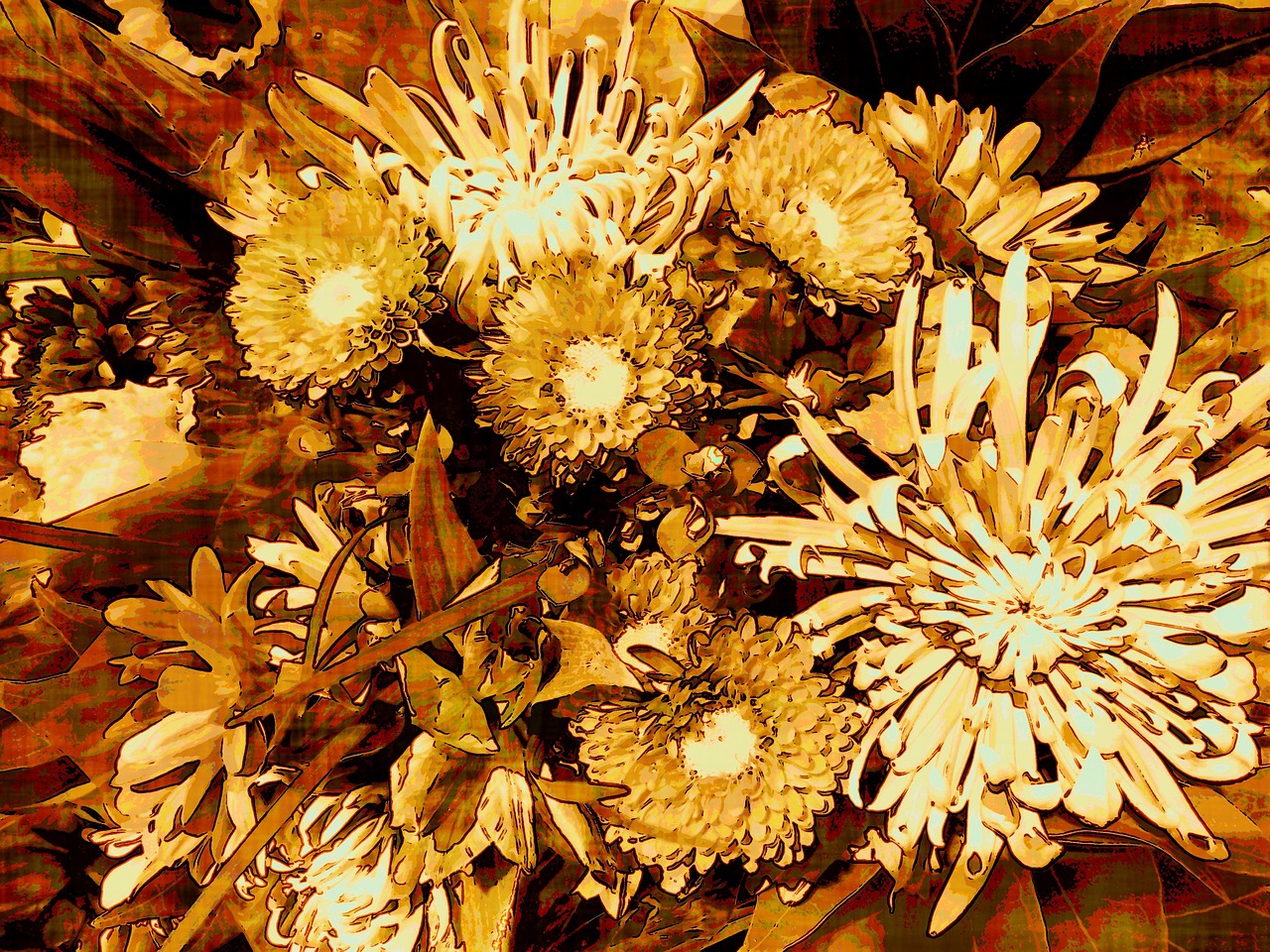
Floral gardens have the power to transcend their role as mere ornamental spaces, becoming vibrant ecosystems that support pollinator conservation. By planting thoughtfully and embracing sustainable gardening practices, individuals and communities can create havens for wildlife while simultaneously enjoying the beauty and tranquility of these gardens. In the face of pollinator declines, each pollinator-friendly garden becomes a vital stepping stone toward a healthier and more biodiverse world. So, let your garden be a sanctuary for pollinators, a haven for wildlife and a testament to our shared commitment to preserving the natural world.
Floral gardens are not just patches of beauty; they possess the incredible potential to evolve into thriving ecosystems that play a pivotal role in pollinator conservation. When we approach gardening with thoughtfulness and sustainability in mind, we unlock the power to create more than just visual splendor; we craft habitats teeming with life.
These gardens, meticulously planned with native and pollinator-friendly plants, invite a symphony of buzzing bees, fluttering butterflies and delicate hummingbirds. They offer sustenance and refuge, becoming crucial rest stops for these essential creatures on their cross-country journeys. In doing so, they breathe life into the very essence of biodiversity.
By adopting sustainable gardening practices like reducing pesticide use and conserving water, individuals and entire communities can ensure that their gardens serve as sanctuaries for both the pollinators and the countless other wildlife that rely on these spaces. The tranquil beauty of these gardens offers not just solace to the human spirit but also serves as a testament to our collective commitment to safeguarding the natural world.
In a world where pollinators face daunting declines, each pollinator-friendly garden becomes a beacon of hope. These gardens interconnect like puzzle pieces, forming a network that aids pollinators in their struggle for survival. Each planting, each wildflower, becomes a vital stepping stone toward a healthier, more balanced and more biodiverse world.
So, let your garden be more than just an ornamental display; let it be a thriving ecosystem. Let it be a sanctuary for pollinators, a haven for wildlife and a living testament to our shared resolve to preserve and protect the intricate web of life that sustains us all. In your garden, you have the power to foster change, one blossom at a time and in doing so, leave a legacy of beauty and conservation for generations to come.
You can also read more about this here: Texas Monarch and Native Pollinator Conservation Plan
More links
To delve further into this matter, we encourage you to check out the additional resources provided here: The Importance of Pollinators | USDA
